Navigating the world of popunder traffic can be tricky. Many advertisers stumble over common pitfalls. These mistakes can hinder the effectiveness of popunder ads.
Popunder ads open behind the main browser window. They are less intrusive but still impactful. When managed well, they can boost brand visibility and conversions.
However, poor management can lead to wasted ad spend. Common errors include poor targeting and ignoring user experience. These can result in low engagement and high bounce rates.
Understanding these mistakes is crucial. It helps in optimizing strategies for better outcomes. This guide will explore these pitfalls and offer solutions.
By avoiding these errors, you can enhance your popunder campaigns. This will lead to improved results and a higher return on investment.
Understanding Popunder Traffic: Basics and Benefits
Popunder traffic refers to visitors generated through popunder ads. These ads appear in a new browser tab or window behind the current one. They subtly engage users without interrupting their browsing experience.
The appeal of popunder ads lies in their subtlety. Users tend to notice them after they close the primary web page. This gives them a chance to interact with the ad without initial disruption.
Popunder traffic offers several benefits for advertisers. Here are some key advantages:
- Enhanced visibility without immediate interference.
- Potential for higher conversion rates due to extended user interaction.
- Cost-effective way to reach a broad audience.
When leveraged correctly, popunder ads can significantly boost brand awareness. They offer a unique way to stay top-of-mind with users. This ad format is also adaptable, allowing for personalization based on audience preferences.
Integrating popunder traffic into your digital strategy can provide substantial advantages. It helps in reaching wider audiences efficiently. However, maximizing these benefits requires careful planning and execution.
Mistake #1: Poor Audience Targeting
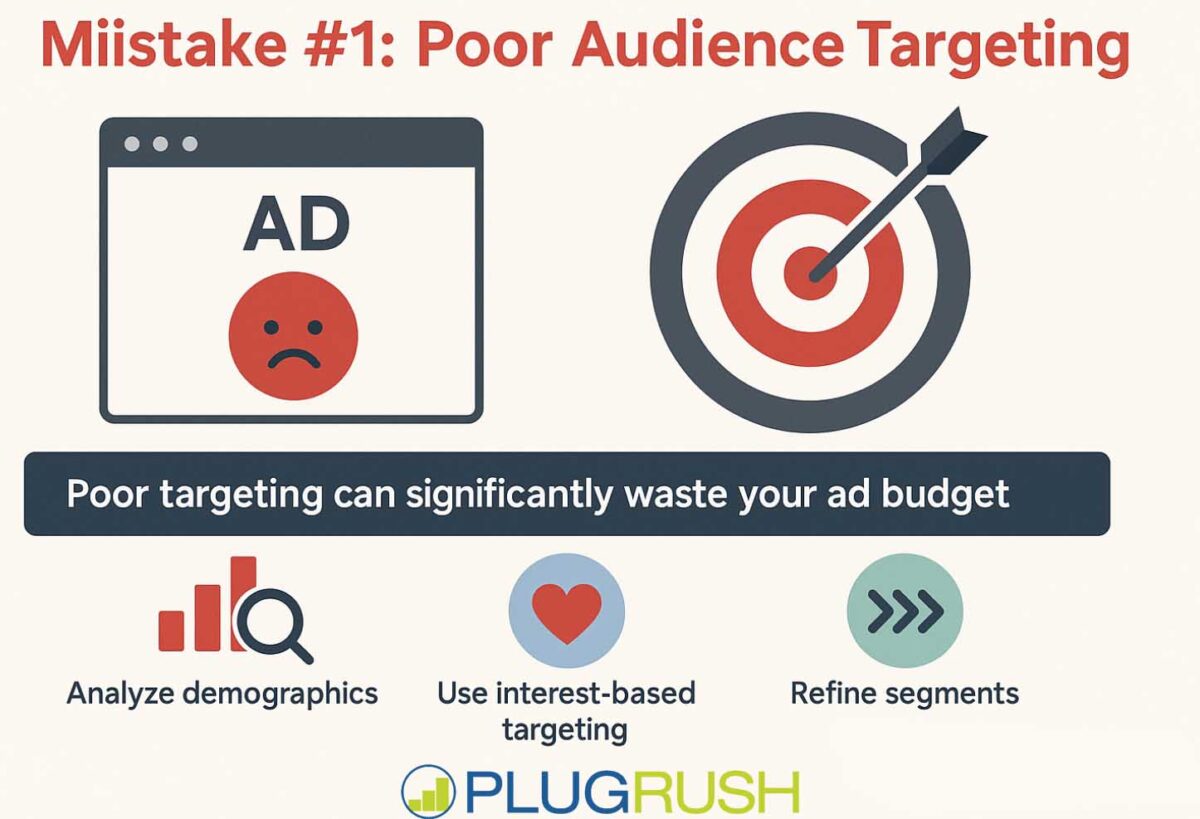
One common error in popunder traffic management is poor audience targeting. Often, ads miss the mark because they’re not aimed at the right people. This can significantly waste your ad budget.
Effective targeting requires a deep understanding of your ideal customer. Without this, popunder ads may reach irrelevant users. This, in turn, results in low engagement and poor conversion rates.
To improve targeting, consider the following steps:
- Analyze demographic data for precise audience insights.
- Use interest-based targeting to align with user preferences.
- Continuously refine audience segments based on performance metrics.
Leveraging detailed audience insights is crucial. It ensures ads align with user interests and behaviors. This approach not only boosts interaction rates but also enhances overall campaign effectiveness. Using platforms like PlugRush can aid in honing your targeting strategy, ensuring popunder ads reach the right people with the right message.
Mistake #2: Ignoring Frequency Capping and Ad Fatigue
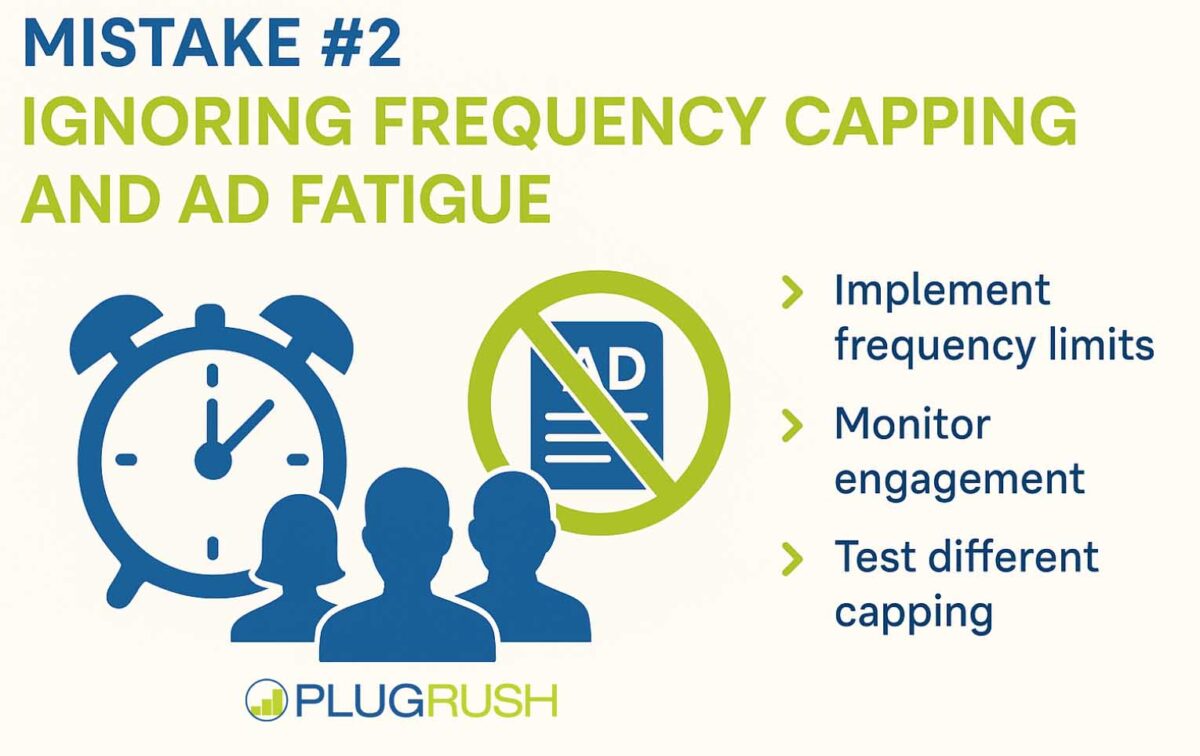
Neglecting frequency capping is a frequent oversight in popunder traffic management. Without capping, ads inundate users, leading to ad fatigue. This results in user irritation, diminishing the campaign’s effectiveness.
Frequency capping limits how often a user sees an ad. This strategy prevents saturation, keeping the audience engaged. Users encountering the same ad repeatedly may develop a negative perception of the brand.
Here are essential points to consider:
- Implement frequency limits to balance ad exposure.
- Monitor engagement to adjust frequency accordingly.
- Test different capping settings to find the ideal frequency.
Addressing ad fatigue through proper frequency management enhances user experience. This not only maintains interest but also potentially boosts conversion rates. Effective frequency capping is crucial in creating a sustainable and impactful popunder ad strategy.
Mistake #3: Overlooking User Experience and Engagement
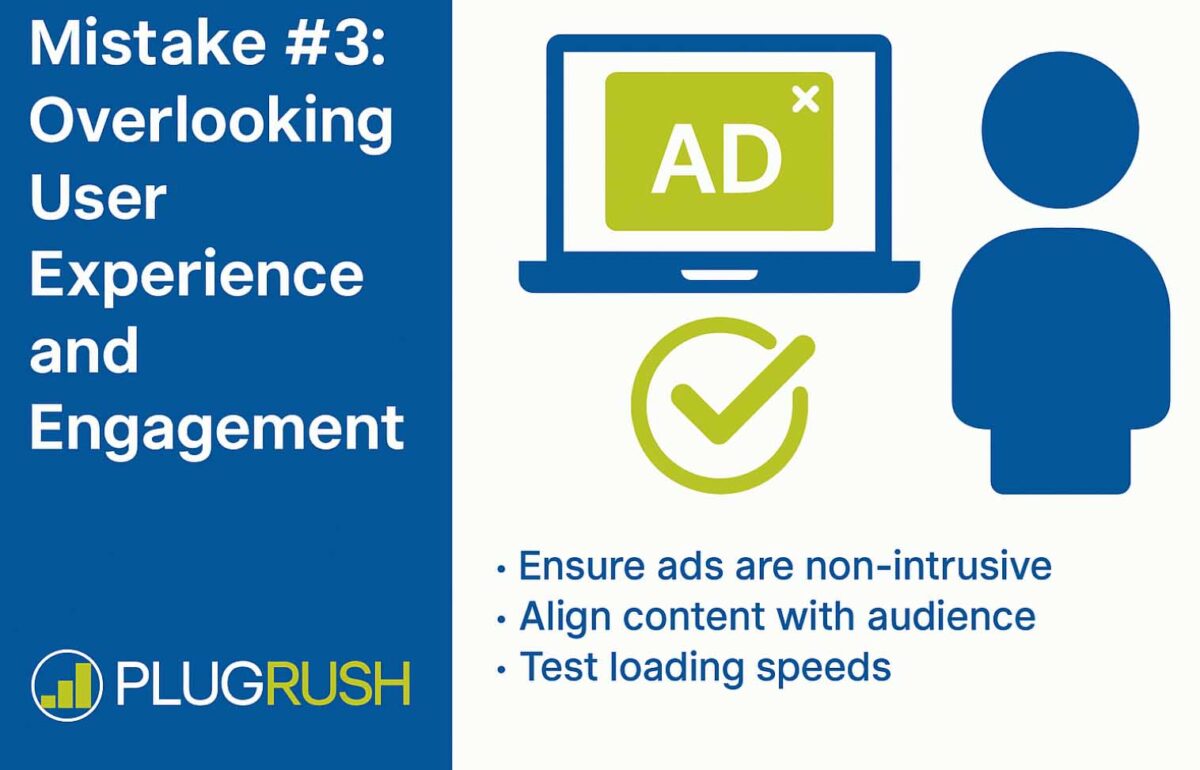
User experience is pivotal in popunder traffic management. When ads disrupt the browsing experience, users are likely to bounce. High bounce rates signify poor engagement, affecting conversion potential negatively.
Popunder ads should enhance, not hinder, user interaction. To achieve this, consider the ad’s relevance and timing. Ads that align with user interests improve engagement.
Key factors to optimize user experience include:
- Ensuring popunder ads are non-intrusive and discreet.
- Aligning ad content with audience needs and interests.
- Testing loading speeds to ensure fast, seamless ad display.
Ensuring that popunder ads provide value to users can lead to better engagement. This approach also fosters positive brand perception. By prioritizing user experience, businesses can effectively leverage popunder ads for greater user satisfaction and conversion rates.
Mistake #4: Neglecting Mobile Optimization
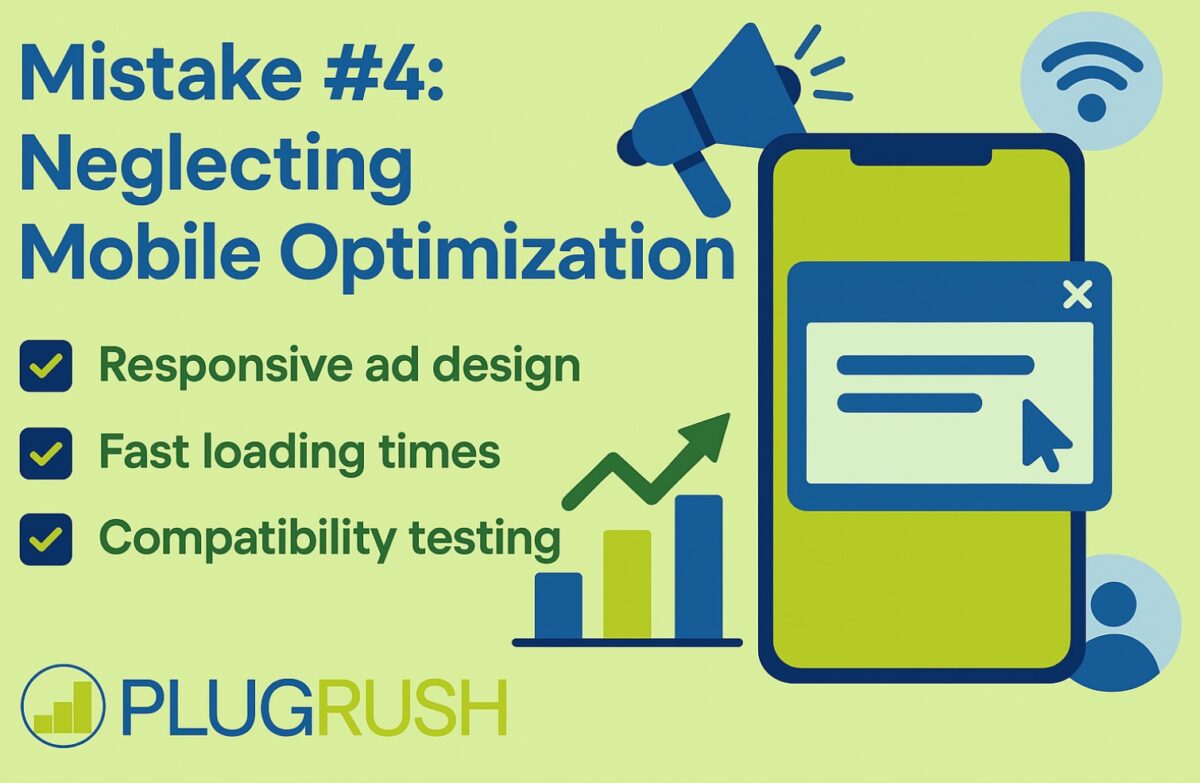
In today’s digital age, a large percentage of web traffic comes from mobile devices. Popunder ads that are not optimized for mobile can severely limit their reach. Mobile users expect fast and smooth browsing experiences.
To ensure popunder ads are mobile-ready, pay attention to:
- Responsive ad design that adjusts seamlessly across devices.
- Fast loading times to maintain user engagement.
- Compatibility testing across popular mobile browsers.
Ignoring mobile optimization can lead to missed opportunities and diminished ad effectiveness. Efficient mobile optimization ensures your popunder ads reach a broader audience. As mobile usage continues to rise, ensuring your ads are mobile-friendly remains crucial for achieving advertising success.
Mistake #5: Weak Creative and Call-to-Action
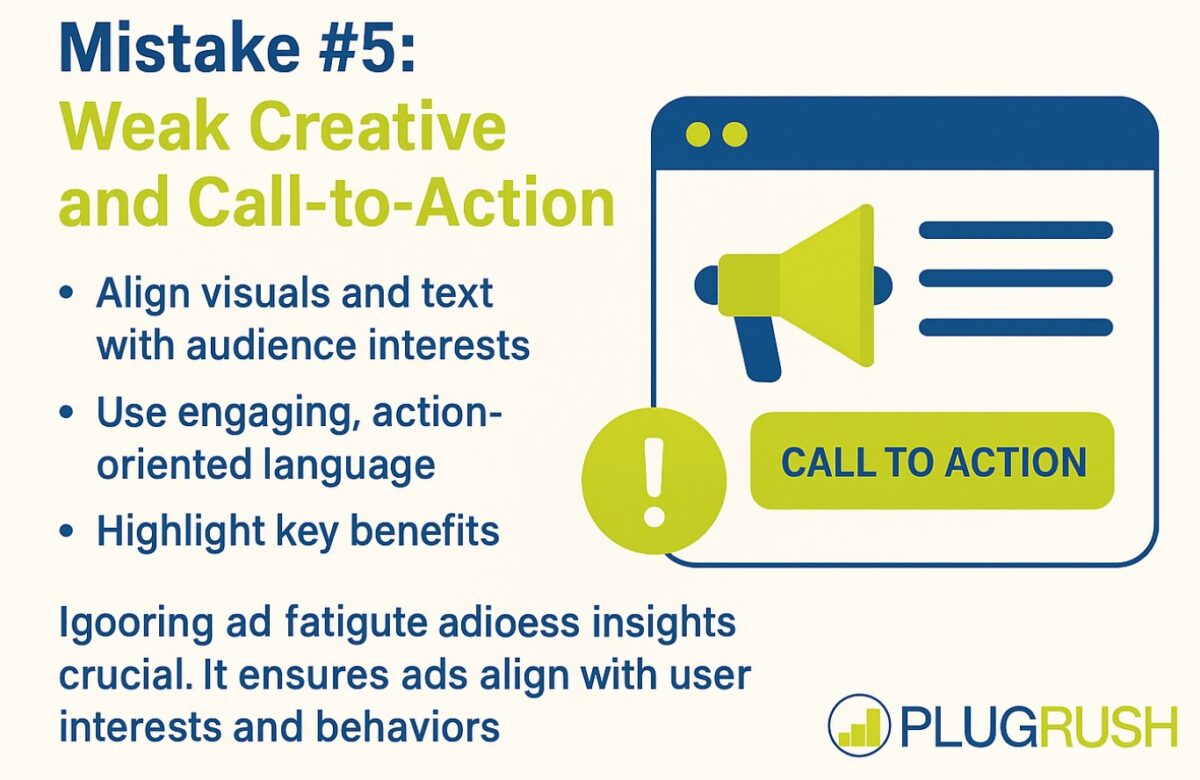
Effective popunder ads require compelling creative elements and a strong call-to-action (CTA). A weak creative fails to capture attention, reducing ad impact. Your ad should engage quickly with clear, concise messaging.
To enhance your popunder ads, consider the following:
- Ensure ad visuals and text align with audience interests.
- Use engaging, action-oriented language in your CTA.
- Highlight key benefits clearly and persuasively.
Ignoring these aspects can lead to lower conversion rates. Your ad must stand out amidst the noise and encourage immediate action. By refining your creative and CTA, you can significantly improve the effectiveness of your popunder campaigns.
Mistake #6: Inadequate Tracking, Analytics, and A/B Testing
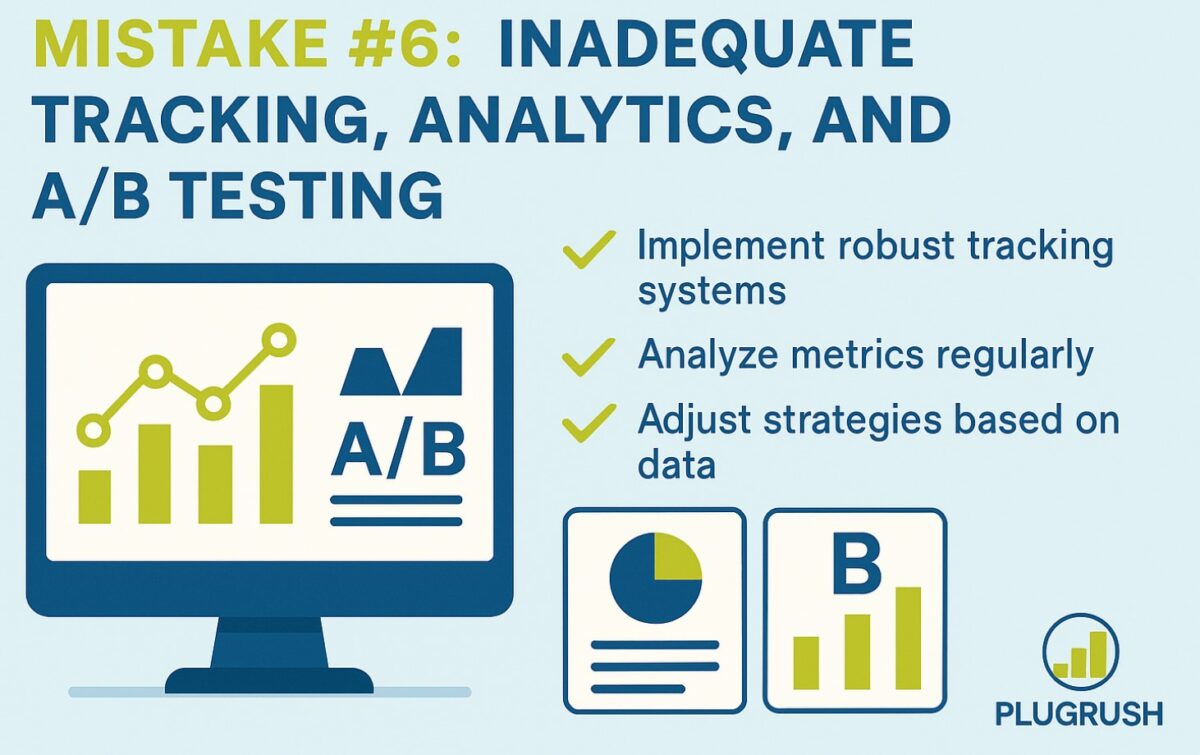
Neglecting tracking and analytics can doom your popunder campaigns. Without data, understanding performance becomes impossible. Effective ad management relies on continuous insights and adjustments.
Analytics tools provide valuable data on user behavior and engagement. Use these tools to identify what’s working and what’s not. Tracking metrics like click-through rates (CTR) and conversion rates is crucial.
Here are key practices to avoid mistakes:
- Implement robust tracking systems to gather detailed data.
- Analyze metrics regularly to spot trends and patterns.
- Adjust strategies based on data insights and findings.
A/B testing is another critical component. Testing different elements helps refine and optimize ad content. Experiment with variations in headlines, visuals, and CTAs. This approach uncovers the most effective combinations, ultimately boosting performance. By leveraging analytics and testing, you enhance ad efficiency and achieve better results over time.
Mistake #7: Failing to Integrate Popunders with Broader Marketing Strategy
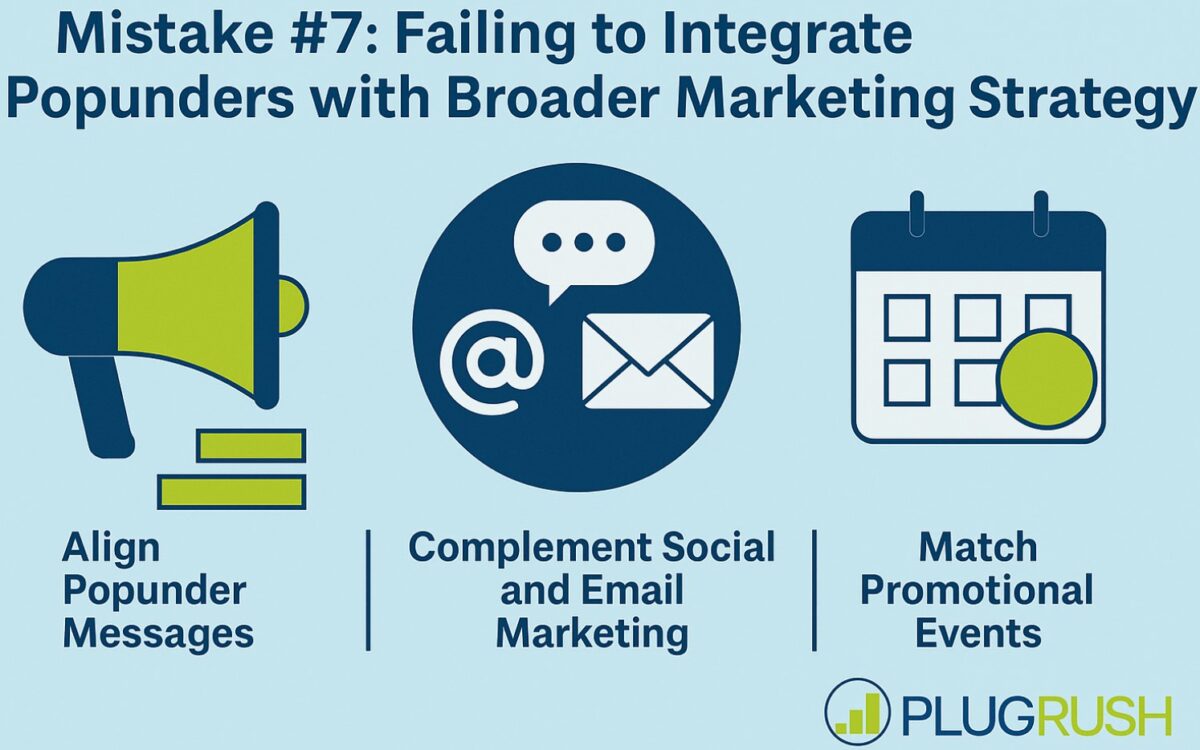
Popunder ads should not work in isolation. Incorporating them into your overall marketing strategy enhances their effectiveness. A cohesive approach ensures consistency and maximizes brand impact.
When popunders align with other marketing efforts, they support overall goals. Integration boosts brand messaging and reinforces campaigns. This alignment provides a seamless experience across all platforms.
Consider the following to better integrate popunders:
- Align popunder messages with other ad campaigns.
- Use popunders to complement social media and email marketing.
- Ensure popunder timing matches broader promotional events.
By integrating popunders, businesses create a unified marketing presence. This strategy improves customer experience and engagement, leading to better results and higher ROI. A holistic approach strengthens your brand and optimizes advertising outcomes.
Mistake #8: Not Adapting to Compliance and Platform Policies
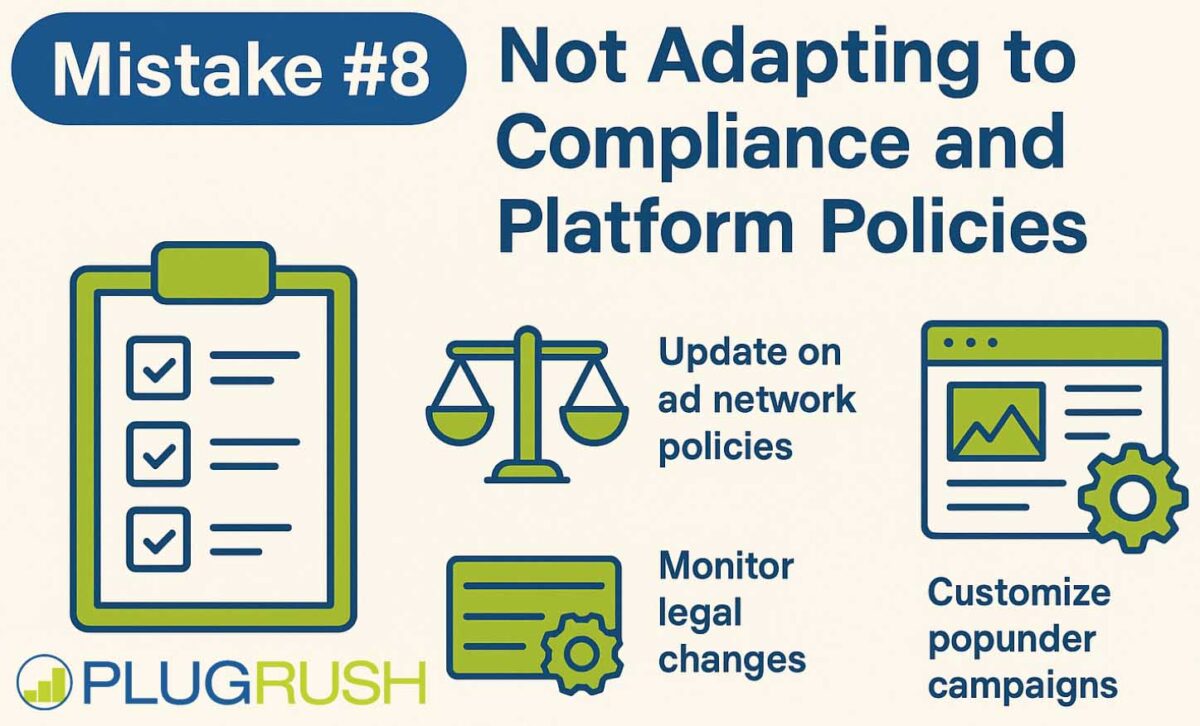
Ignoring compliance can lead to serious issues. Popunder ads must adhere to specific platform rules and regulations. Staying informed and proactive is key to avoiding penalties.
Failing to comply might result in ad disapproval or account suspension. To ensure compliance:
- Regularly update yourself on ad network policies.
- Monitor legal changes affecting digital advertising.
- Customize popunder campaigns to meet specific platform requirements.
Proper adaptation safeguards your campaigns and enhances their legitimacy. By prioritizing compliance, marketers build trust and maintain smooth operations, ultimately contributing to sustained success in popunder traffic management.
Mistake #9: Overlooking Budget Allocation and Bidding Strategies
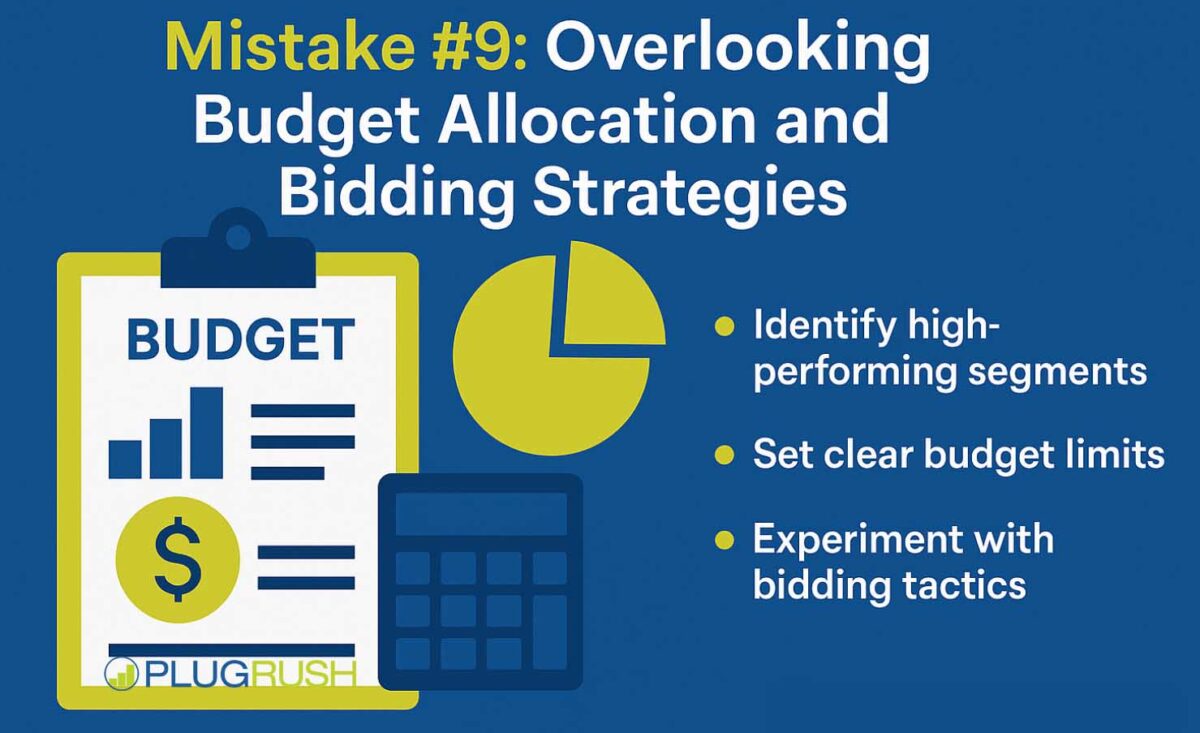
Effective budget allocation is crucial for popunder traffic success. Many marketers fail to allocate funds strategically, which limits campaign effectiveness. Mismanaged budgets often lead to overspending or missed opportunities.
Equally important are bidding strategies. Without thoughtful bidding, you may end up paying too much for unproductive traffic. This underscores the necessity of regular adjustments and testing.
To improve budget and bidding management:
- Identify and prioritize high-performing segments.
- Set clear budget limits based on campaign goals.
- Experiment with different bidding tactics to find the optimal balance.
These practices help maximize returns and ensure popunder ads achieve their full potential.
Mistake #10: Underestimating the Value of Continuous Optimization
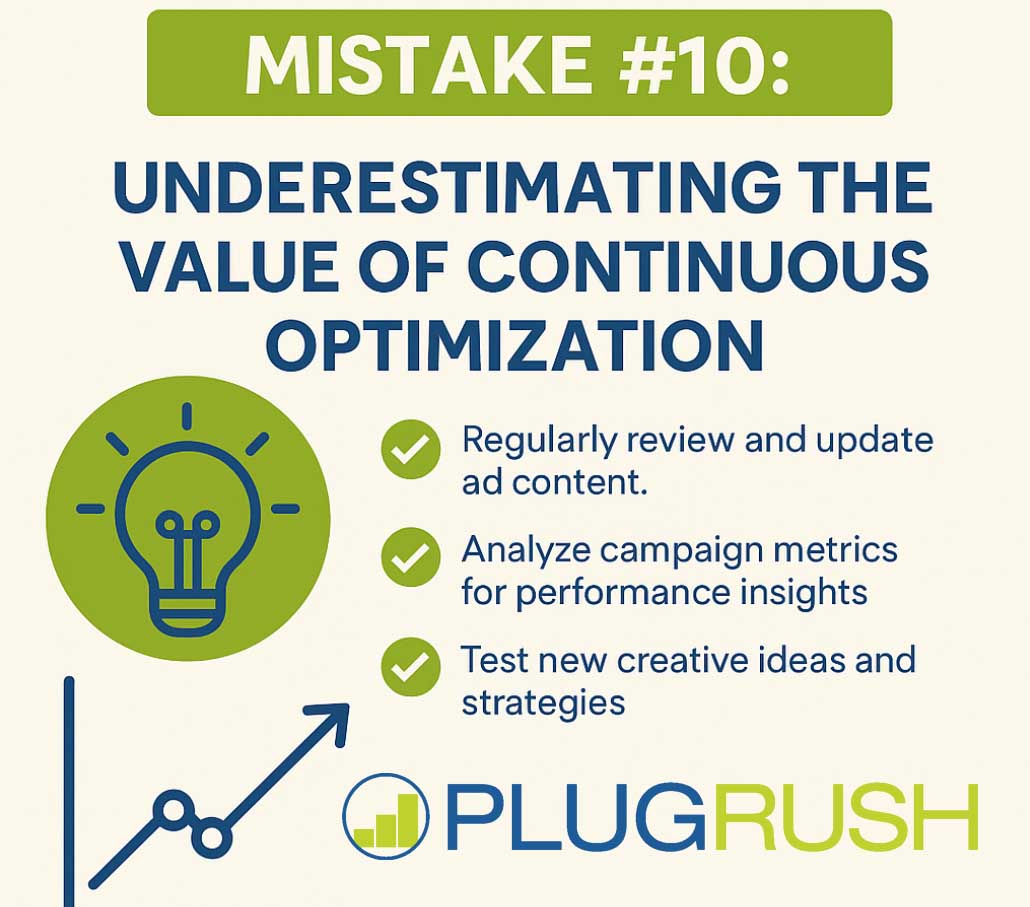
Continuous optimization is the heart of effective popunder traffic management. Neglecting it can lead to stagnant campaigns and lost potential. Many advertisers mistakenly believe that initial setup is enough.
However, market trends and user behaviors shift rapidly. To stay competitive, regular tweaks and updates are essential. Monitoring performance data enables advertisers to adapt to these changes.
Key practices for ongoing optimization include:
- Regularly reviewing and updating ad content.
- Analyzing campaign metrics for performance insights.
- Testing new creative ideas and strategies.
These steps help ensure that your popunder campaigns remain relevant and effective over time.
Pro Tips: Maximizing ROI with Popunder Traffic
Maximizing ROI with popunder traffic requires strategic foresight and diligent execution. A key approach is to ensure alignment with broader marketing goals. This alignment can enhance brand visibility and drive more targeted traffic.
Here are some actionable tips to boost ROI:
- Leverage robust data analytics for performance insights.
- Regularly test different ad networks and formats.
- Implement clear and compelling call-to-action (CTA).
Additionally, consider audience segmentation for more personalized messaging. Tailored ads can significantly boost engagement and conversion rates. Finally, always be proactive about adapting strategies based on analytics. This will not only maximize returns but also sustain campaign effectiveness in the long run.
Conclusion: Smarter Popunder Traffic Management for Lasting Results
Effective popunder traffic management hinges on strategic execution and continuous learning. By sidestepping common pitfalls, advertisers can unlock the full potential of popunder ads.
It’s crucial to maintain a balance between automation and human insight. This combination allows for nuanced decision-making and optimizes campaigns.
Adaptability is equally important in this dynamic landscape. By staying attuned to market trends and user preferences, businesses can ensure their ads remain relevant. Consistently refining strategies will not only drive higher returns but also foster lasting brand growth. With these practices, popunder ads can be a significant asset in any digital marketing toolkit.




